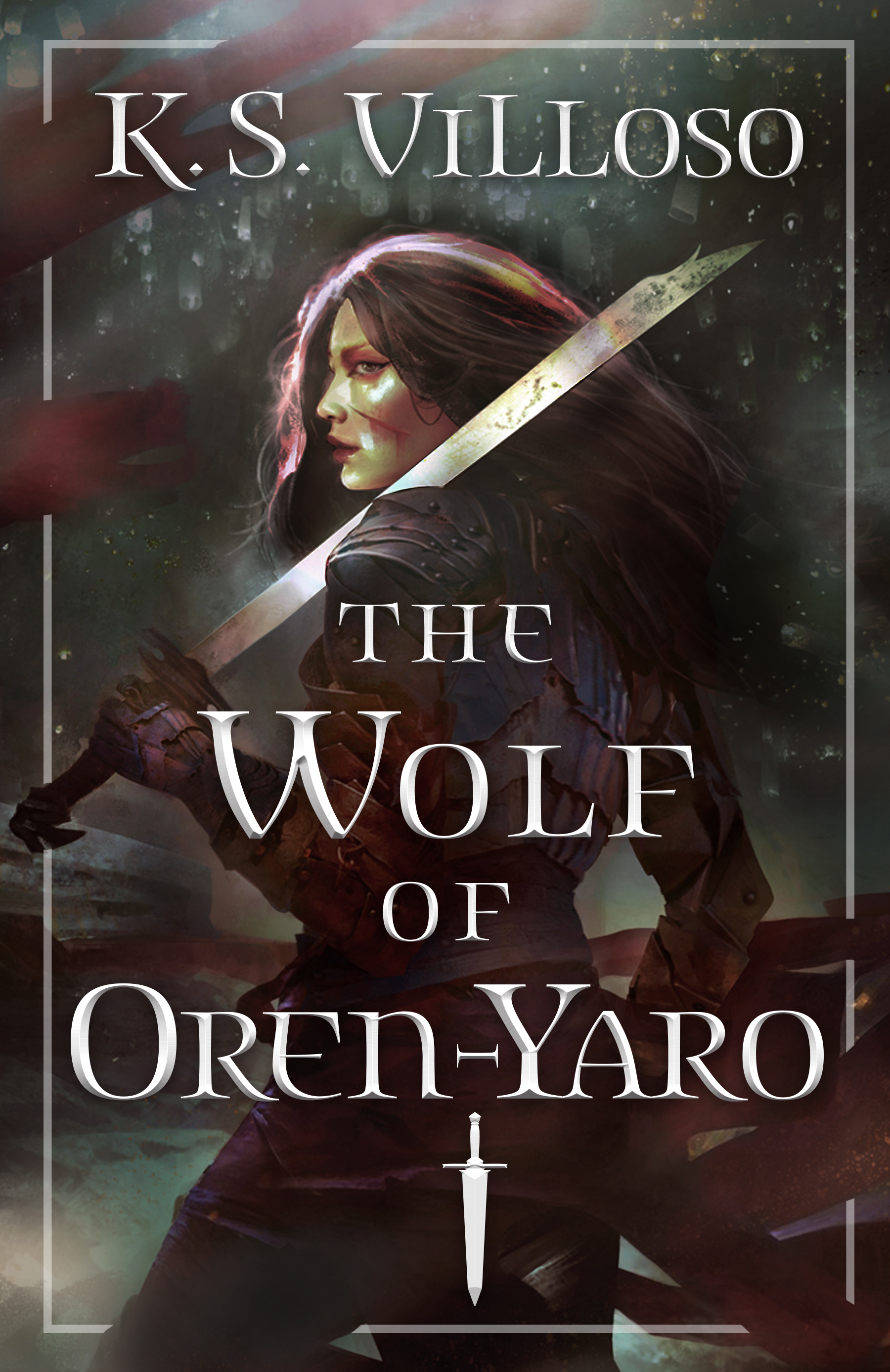My worldbuilding is inspired by Filipino culture, and Queen Talyien’s Jin-Sayeng wears this influence with pride. I wanted to take a moment to talk about the kampilan she is holding in the cover, which is a sword used by various ethnic groups in the Philippines, and is often associated with warriors. Datu Lapu-Lapu of Mactan is often depicted wielding a kampilan while killing Ferdinand Magellan.
The most distinctive features of this sword is the hooked tip, and a hilt that represents a creature’s open mouth. The latter often shows crocodiles or mythical creatures like the bakunawa or naga.
The sword Talyien is holding is actually her father’s and doesn’t show up in The Wolf of Oren-yaro for a good reason—it’s missing. Through the first and second books, Tali goes through a variety of swords, and it is only later on in the third book that she is reunited with this one at last. The kampilan symbolizes the link between father and daughter—one a bloodthirsty villain who nearly caused the nation’s downfall, the other a queen trying to fix his mistakes.
The food in Chronicles of the Bitch Queen is also inspired by what I know of Asian cuisine in general. I wanted to show the vibrancy, flexibility, and diversity of East and Southeast Asian meals. Not all are authentic—some I made myself to fit the context of the fictional nations, the kind of unholy fusion stuff I often make in my own kitchen—but others are straight out of Filipino cuisine. “Chopped pig snout,” which appears in that one fateful dinner party by the end of the first act of The Wolf of Oren-yaro, is sisig, an actual dish of chopped pork that often incorporates the entire pig’s head and sometimes offals. It’s really bad for you (I cook mine with at least two heaping tablespoons of mayonnaise), and also sinfully delicious. The characters also seem to find themselves in congee stalls a lot, particularly as this used to be a guilty pleasure for me and my cousins… to me, heaven on earth is a gingery, fish saucy bowl of congee with crispy fried garlic and pork rinds, and a century egg. There is also mention of roast pork, and… have you heard of our lord and savior, lechon? I, too, would delay stabbing someone for a plate of that stuff.
Food builds the world in many different ways. The ingredients indicate what is readily available in a region, or if the region is involved in trade in some way, or its influences from other nations. Since The Wolf of Oren-yaro and its sequels are in nations that are heavily Asian-inspired, rice is a staple, and there is rice in almost every meal—from entrees to dessert. Particularly poignant, considering that much of the troubles in the series stems from the fact that mad dragons are razing fields in the west—the region responsible for producing most of the rice in Jin-Sayeng.
More important than the food, however, is what goes on around mealtimes. Epic fantasy has always had a fond history with food, because it provides a great way to depict the cultural norms in that society. It’s not just about what people eat, but how they act around food, what they talk about while eating, who does the preparation, and so on. Mealtimes give characters an opportunity for respite—the simple act of sharing a meal can show more than words can. Some characters in the novels show affection by making food or offering food, and food untouched—especially after offered—can reveal another side to an interaction.
How people eat is also a key part of the worldbuilding. Mirroring Filipino culture, Talyien’s people eat with their hands (except with food like soups or rice porridge), and more traditional regions go as far as to forego plates in favour of banana leaves on a table in a more communal style of eating. But Tali often second-guesses herself when around others who don’t share this background. To some cultures, this manner of eating seems crude, uncivilized, and unsophisticated. It’s yet another indicator of who she’s most comfortable with or how she feels about a situation.
Anyway, here’s a quick and dirty and completely unauthentic recipe that often fills my craving for lechon. You can easily make it in a couple of hours, so you, too, can read The Wolf of Oren-yaro and scream amidst the wafting scent of roasted meat.
- A hunk of pork belly (pork shoulder also works). Pork belly has skin for crackling, in case that’s important for some reason 😉. You do need something with a reasonable amount of fat, so don’t try this with loin.
- Salt to taste (I use enough to give it a liberal sprinkling on all sides).
- A sprinkling of lemongrass powder (the taste is very strong so be careful), and about equal amounts of garlic powder and ginger powder. Alternatively, actual lemongrass, with garlic and ginger ground to a paste, but who has time for that.
- Preheat oven to 350° F.
- Cover meat with the powder, or use the lemongrass and garlic/ginger paste as “filling” inside the roast and tie it. Place meat on a roasting pan, shove it inside oven. (If you’re using pork belly, have the skin side facing up!)
- Cook uncovered for about 1 hour per lb. Lower the heat if it looks like it’s cooking too fast. In the last 5 minutes or so, I often crank the heat up to get the skin really crispy before removing it from the oven to rest.
- Chop it up and serve with white rice and lechon sauce, or a soy sauce/vinegar dipping sauce. My favourite side dishes for it include roasted eggplant salad (ensaladang talong), bittermelon salad (ensaladang ampalaya), or a plain, steamed plantain.
- Eat with your hands!

If you want to learn more about the world in The Wolf of Oren-yaro, check out these links, with other recipes by people who know how to write actual recipes:
Wol’s Cocktail Recipe (“Khine Milk Tea”)
The Speculative Kitchen’s Wolf It Down: White Rice, Yellow Curry, Scrambled Egg


K.S. Villoso grew up in the slums of Manila before moving to Canada in her teens. She now writes fantasy with themes shaped by her childhood–stories of struggle, hope, and resilience amidst grim and grit. Her debut, THE WOLF OF OREN-YARO, will be released by Orbit in early 2020.
Click here to find out more.
Follow K.S. Villoso on Twitter.

I love this interview! Food and meals are such an important part of culture and one of the things I loved about The Wolf Of Oren-Yaro was how they were incorporated into the story